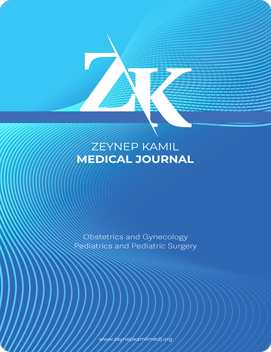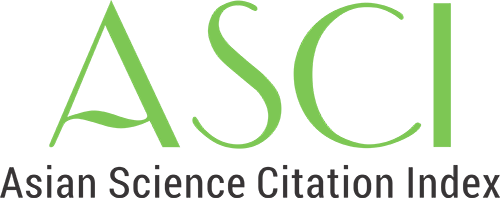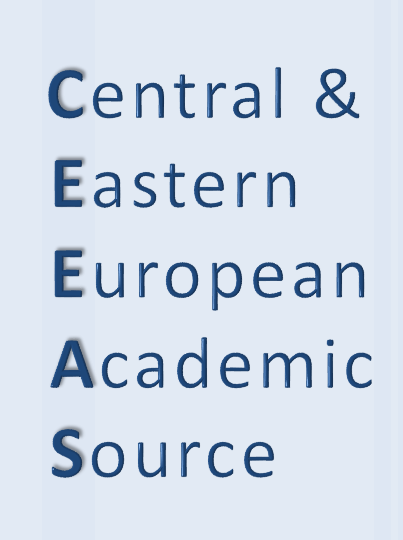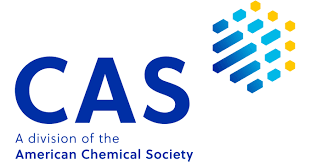Quick Search
Volume: 50 Issue: 3 - 2019
| ORIGINAL RESEARCH | |
| 1. | Normal Reference Ranges of Ductus Venosus Doppler Indices in the Period from 17 to 36 Weeks of Gestation Selen Gursoy Erzincan doi: 10.16948/zktipb.605311 Pages 102 - 107 INTRODUCTION: To establish reference ranges of ductus venosus (DV) in healthy singleton pregnant women with known prognosis. METHODS: This retrospective study was conducted on low-risk singleton pregnancies between 17 and 36 weeks of gestation between March 2018 and March 2019. Fetuses with postpartum Apgar score ≥7 and birthweight ≥2500 grams were included in the study. Pregnancies in which the fetus had structural or chromosomal abnormalities, multiple gestations and those complicated with intrauterine growth restriction, fetal macrosomia, preeclampsia and diabetes were not included. DV absolute blood flow velocities (S-wave, D-wave, a-wave) and Doppler indices that were derived from those velocities (preload index (PLI), pulsatility index for veins (PIV), peak velocity index for veins (PVIV), S/a ratio, mean velocity (Vmean) ve time-averaged maximum velocity (TAmax)) were recorded. Poor quality images were also excluded. RESULTS: A total of 722 fetuses were evaluated for DV absolute blood flow velocities and Doppler indices. When the relationship between gestational age and DV Doppler parameters was examined, S-wave, D-wave, a-wave, Vmean, TAmax were found to be statistically significant positive correlations, while PLI, PVIV, PIV and S/a ratio were found to be negatively correlated. DISCUSSION AND CONCLUSION: Reference values for DV Doppler indices between 17 and 36 weeks of gestation in a Turkish population were established. These reference ranges are of importance in terms of a noninvasive method for the evaluation of fetal cardiac function. |
| 2. | Comparison of Clinical Outcomes of Intrauterine Inseminations which Performed at 36 Hours Versus 42 Hours After hCG Trigger Samettin Çelik, Banuhan Sahin, Aysemin Gürçağlar, Canan Soyer çalışkan, Safak hatirnaz doi: 10.16948/zktipb.566761 Pages 108 - 111 INTRODUCTION: Intrauterine insemination (IUI) is a commonly used procedure to increase the chance of pregnancy in infertile couples. The planned IUI timing after hCG (human chorionic gonadotropin) trigger was practically determined as at 36th hour. However, this timing may be delayed due to clinical traffic. In our study, we aimed to compare the clinical results of patients who underwent IUIs at 36th hour versus at 42nd hour. METHODS: The records of 450 patients who were admitted to Samsun Training and Research Hospital due to unexplained infertility and were performed IUI after gonadotropin treatment, were retrospectively analyzed. Demographic information, hormone levels, endometrial thickness, total follicle numbers, β-hCG test positivity, live birth rates, and spontaneous abortion rates of patients with 6 hours delay (42 hours) in IUI timing after hCG trigger due to the traffic in the clinic, and patients with on the time (36 hours) IUI performation were evaluated. Student's t-test and Chi-square test were used for comparisons between groups. RESULTS: IUI procedures were applied to 348 patients at the 36th hour and 102 patients at the 42nd hour after the hCG triggers. No difference was observed between the groups in terms of ages, infertility durations, basal hormone levels and endometrial thicknesses (p <0.05) (Table 1). When the effects of IUI treatments on pregnancy outcomes were examined, there was no difference between groups in terms of dominant follicle numbers obtained after ovulation induction, β-hCG test positivity, livebirth rates and spontaneous abortion rates. (p=0.34, p=0.12, p=0.31, p=0.25) (Table 2). DISCUSSION AND CONCLUSION: The clinical pregnancy rates of patients with IUI timing after ovulation induced by hCG injection does not change with delaying to 42nd hour versus 36th hour. |
| 3. | Comparison of Stage IA and Stage IB Endometrial Cancerpatients who were Unequivocally LVSI Positive and Grade 1-2: Analysis of High Intermediate Risk Group which was Currently Defined by ESMO-ESGO-ESTRO Consensus in 2016 Koray ASLAN, İbrahim YALÇIN, Hanifi Şahin, Mehmet Mutlu Meydanli doi: 10.16948/zktipb.585846 Pages 112 - 116 INTRODUCTION: The patients with endometrial cancer have been devised based on clinic-pathological prognostic factors to identify patients at the risk of recurrence and to guide adjuvant therapy use. According to contemporary guidelines, a new risk subgroup has been declared. Regardless of depth of invasion, all patients who were unequivocally LVSI positive and grade 1-2 defined as High-intermediate risk group. The purpose of this retrospective study was to compare the prognoses of women with stage IA high-intermediate endometrial cancer to those women of stage IB High-intermediate endometrial cancer. METHODS: A single center, retrospective department database review was performed to identify patients with endometrial Cancer. A total of 46 women with Stage I endometrial cancer who were unequivocally LVSI positive and grade 1-2 between 2008 and 2018 were included in this retrospective study. Seventeen (37%) were classified as Stage IA and 29 (63%) as Stage IB. Kaplan-Meier method was used to generate survival data. RESULTS: The 5-year disease-free survival (DFS) rate was 94.1% versus 82.3%(p=0.95) and 5-year overall survival (OS) was94.1% versus 89% (p=0.81) for stage IA and stage IB, respectively. DISCUSSION AND CONCLUSION: DFS and OS rates of patients with Stage IA, grade 1-2 and LVSI positive endometrial cancer and Stage IB, grade 1-2 and LVSI positive endometrial cancer seem to be similar. |
| 4. | Prediction of Treatment Success According to First Day and Fourth Day B-Hcg Values of Ectopic Pregnancy Patients which Treated with Methotrexate: A Retrospective Study of 183 Patients Ramazan Denizli, Önder Sakin, Nayif Çiçekli, ALİ DOĞUKAN ANĞIN, Muzaffer Seyhan Cikman, Zehra Meltem Pirimoglu doi: 10.16948/zktipb.458145 Pages 117 - 121 INTRODUCTION: We aimed to predict treatment success with comparing B-hcg values on first and fourth days of methotrexate injection. METHODS: We research the informations of ectopic pregnancy, retrospectively, between years 2009 and 2017 in Kartal Dr.Lütfi Kırdar Training and Research Hospital which treated with single dose MTX. 183 patients included into the study. RESULTS: In our study; 77,6% of patients treated with single dose MTX injection. With inclusion of second dose injected patients, success rate is rising to 91,8%. When we look at the prior B-hcg values, patients,those have less than 2000 mIU/mL values, have higher treatment success rate with single dose MTX injection. When we look at the patients, who needed second MTX dose, we have seen 95,95% success rate on patients B-hcg values less than 4000 mIU/mL. More than 10 percent decrease of Patients B-hcg value between first and fourth days of treatment showed 94,6% success rate. As patients treatment,whose B-hcg values decreased less than 10%, showed 48,6% success rate. DISCUSSION AND CONCLUSION: Despite treatment success rate as initial B-hcg levels rises, we have to keep in mind that even patients with higher than 5000 mIU/mL B-hCG, there is a 72% treatment success rate. If there is no contraindication, still MTX treatment considered as a good choice of treatment. More than 10 percent decrease on patients fourth day of treatment B-hcg values seems to be a good parameter for treatment success prediction. But there is 48,6% of negative predictive value, and this is a disadvantage about prediction of MTX injection treatment success. |
| 5. | Retrospective Investigation of Patients with Non Ketotic Hyperglisinema Sema Ateş, Ibrahim Yakut, Aynur Küçükçongar Yavaş, Mehmet Gunduz, NECATİ EMRECAN TÜRK doi: 10.16948/zktipb.468603 Pages 122 - 125 INTRODUCTION: Non ketotic hyperglycinemia (NKH) is a rare and severe congenital metabolic disorder that develops as a result of impaired glycine destruction. The aim of this study was to evaluate the patient with NKH retrospectively. METHODS: In our study, the files of 12 patients diagnosed as Non-Ketotic Hyperglycinemia diagnosed and followed in Ankara Child Health and Diseases Hematology Oncology Training and Research Hospital between January 2007 and August 2018 were retrospectively reviewed.Demographic characteristics of the patients, the results of the etiology and the treatments they received were recorded. RESULTS: Twelve patients with NKH who were followed up and treated at our hospital between January 2007 and August 2018 were included in the study. The ratio of first degree consanguineous marriages between mother and father was 67% (n: 8). The most common reasons for admission in patients were not sucking. Central nervous system anomalies were detected in 92% of patients (n: 11) in cranial MRI (cranial magnetic resonance imaging). Blood and CSF glycine levels were higher in all patients and CSF / plasma glycine ratio was higher than 0.08. Genetic analysis revealed that 3 patients (25%) had a significant mutation in terms of Non ketotic Hyperglycinemia 11 patients (92%) received at least two antiepileptic and glycine-reducing treatments. While 7 of our patients died at different ages, 4 patients were maintaining their life as sequelae No sequela was found in 1 patient. DISCUSSION AND CONCLUSION: Our aim is to emphasize the diagnosis and treatment approaches of NKH and the importance of congenital metabolic diseases (DMH). In our country, where consanguineous marriages are common, congenital metabolic diseases should be kept in mind in new born who are born healthy, but have difficulty in sucking, hypotonia and convulsion. |
| 6. | Relationship Between Fetal Sex and The Expression Levels of MicroRNA's in Healthy Pregnancies Selin Demirer, Meryem Hocaoglu, Bilge Ozsait Selcuk, Abdulkadir Turgut, Evrim Komurcu-Bayrak doi: 10.16948/zktipb.529486 Pages 126 - 130 INTRODUCTION: Differences in microRNA (miRNA) expression in maternal blood and placenta can help us further understand maternal and fetal biology and physiology. Fetal sex differences in miRNA expression are a result of both hormonal and genetic differences between the sexes. The aim of this study was to evaluate the relationship between the expression levels of miRNA-21-3p, miRNA-155-5p, miRNA-518b and miR-16-5p and fetal sex. METHODS: This study was carried out at the Department of Obstetrics and Gynecology of Istanbul Medeniyet University, Goztepe Research and Training Hospital. Twenty-one healthy pregnant women, who were having their pregnancy care through outpatient setting between November 2017 and March 2018, were included in the study. Maternal peripheral blood samples were obtained from the same healthy pregnant females at 29 weeks of gestation (Group 1) and at 37 weeks of gestation (Group 2). The maternal blood leucocyte levels of miRNAs (miRNA-21-3p, miRNA-155-5p, miRNA-518b and miR-16-5p were analyzed using SYBR-Green real-time quantitative polymerase chain reaction. The expression levels of miRNAs between groups and fetal sexes were analyzed statistically. RESULTS: There were no significant differences in clinical and laboratory characteristics between fetal sex in Group 1 and Group 2 (p> 0,05). There was a significant increase in the expression levels of miR-16-5p (p=0,01) in pregnant women with female offspring, compared to the pregnant with male offspring at 29 weeks of gestation. There were significant increases in the expression levels of miR-21-3p (p=0,02), miR-155-5p (p=0,08), miR-518b (p=0,02) in pregnant women with male offspring, compared to the pregnant with female offspring at 37 weeks of gestation. DISCUSSION AND CONCLUSION: For the first time, in this study were shown to have differential expression levels of maternal blood leukocyte miRNAs between the fetal sexes at the beginning and end of the third trimester. |
| 7. | Retrospective Evaluation of Patients with Recurrent Acute Bronchiolitis Sema Ateş, NECATİ EMRECAN TÜRK doi: 10.16948/zktipb.464411 Pages 131 - 134 INTRODUCTION: Acute bronchiolitis is the most common disease of lower respiratory tract caused by inflammatory obstruction of small airways, especially in children under two years of age. Some predisposing factors and underlying diseases can cause recurrent attacks in bronchiolitis. The aim of this study was to evaluate the recurrent bronchiolitis-diagnosed infants retrospectively. METHODS: The files of 759 patients with acute bronchiolitis aged between 1-24 months, who were followed-up in the infant-care unit of our hospital between January 1, 2016 and December 31, 2017, were reviewed retrospectively for two years. 231 patients with multiple episodes were included in the study. Demographic characteristics of patients such as age, gender, number of attacks, first episode age were examined. Echocardiography, findings of respiratory tract viral panel examinations, history of recurrent episodes, premature birth, history of atopy in the patient and family were recorded. RESULTS: A total of 231 patients with recurrent bronchiolitis who were hospitalized between January 1, 2016 and December 31, 2017 were included in the study. When the age groups of the patients were examined, the most crowded group consisted of 1-6ay patients. Most of the patients (70.6%) were admitted to hospital in spring and winter. Diseases thought to prepare the ground for recurrence of attacks; viral bronchiolitis, gastro esophageal reflux, congenital heart disease, cystic fibrosis, wheezing infant. According to the results of the respiratory tract viral panel, viral bronchiolitis was the most common cause of respiratory syncytial virus, parainfluenza and rhinovirus. DISCUSSION AND CONCLUSION: Knowing the factors that cause the recurrence of attacks in acute bronchiolitis will reduce the rate of hospitalization by early diagnosis and treatment. |
| 8. | Effects of Drain After Total Laparoscopic Hysterectomy Muzaffer Seyhan Cikman, Önder Sakin, ALİ DOĞUKAN ANĞIN, Mustafa Gökkaya, Zehra Meltem Pirimoglu, İsmet GÜN doi: 10.16948/zktipb.465523 Pages 135 - 137 INTRODUCTION: The use of drain after total laparoscopic hysterectomy (TLH) with benign causes is not a routine practice and is a matter of debate. Our aim is to investigate the effect of drainage on patient blood values, postoperative follow-up parameters and discharge times. METHODS: Patients who underwent TLH for benign gynecological reasons between January 2015 and December 2017 were retrospectively screened at Kartal Dr. Lütfi Kırdar Training and Research Hospital. A hundred and three patients were included in the study.Patients were divided into two groups: drain (n: 57) and no-drain (n: 46). The groups were compared in terms of duration of operation, number of ports, hemoglobin-hematocrit reduction, fever, additional analgesic requirement and discharge time.The findings were analyzed by SPSS 15. RESULTS: Hemoglobin ve hematocrit values were statistically significantly lower in cases with drainage. There were no significant differences in postoperative analgesic requirement, need for blood transfusion and duration of discharge. None of the patients needed relaparatomy. DISCUSSION AND CONCLUSION: The use of drain after TLH in patients with benign gynecologic disease is associated with a decrease in hemoglobin and hematocrit values. We do not recommend using drains in such operations unless it is necessary. |
| 9. | Determination of Wnt, β-catenin, TGF β and Cyclin D1 Expression Levels in Uterine Leiomyoma HALIME HANIM PENÇE, Ozge Komurcu Karuserci, Esra Guzel Tanoglu, Mete Gurol UGUR doi: 10.16948/zktipb.629373 Pages 138 - 141 INTRODUCTION: Uterine leiomyomas are common estrogen and progesterone-dependent benign tumors. They occur in women of reproductive age and cause serious problems such as irregular uterine bleeding, severe anemia, recurrent pregnancy loss. Each leiomyoma is thought to originate from a single mutated myometrial smooth muscle stem cell. However, it is not known how estrogen / progesterone regulates the growth of leiomyoma. The aim of this study was to show the effects of Wnt, β-catenin, TGF β, cyclin D1 genes on uterine leiomyoma progression. METHODS: Tissues from 70 patients and 66 healthy individuals who were admitted to Gaziantep University Faculty of Medicine, Department of Obstetrics and Gynecology and diagnosed as leiomyoma were included in the study. Differences in the expression of genes between patient and healthy groups were performed by quantitative Realtime PCR. RESULTS: The mean age of the patients was 44.1 ± 6.8 years. The total number of smokers was 8% and there was no difference between the groups in terms of smoking. The expression levels of Wnt, β-catenin, TGF β, and cyclin D1 genes were significantly increased in patients with uterine leiomyoma compared to healthy group. DISCUSSION AND CONCLUSION: In this study, it was demonstrated that Wnt, β-catenin, TGF sik β and cyclin D1 play a critical role in the formation and growth of leiomyoma of estrogen / progesterone. |
| 10. | Live Birth and Endometrial Thickness in Unexplained Infertility Ali Ovayolu, İsmet GÜN, dilek benk silfeler, Tayfun KUTLU doi: 10.16948/zktipb.550114 Pages 142 - 145 INTRODUCTION: We aimed to demonstrate any possible relationship between endometrial thickness on the day of hCG trigger and live birth rates (LBRs) among women with unexplained infertility who underwent IVF/ICSI-ET cycles. METHODS: We retrospectively collected data from Zeynep Kamil Women's and Children's Disease Training and Research Hospital, IVF Center archive. Cases between 2005 and 2013 were collected. Women aged between 23-39 years with a BMI <30 kg/m2 with fresh embryo transfers were included. Patients were divided into two groups based on their livebirth status (live birth: group 1, no live birth: group 2). Demographic characteristics, treatment regimens, and endometrial thickness on the day of hCG trigger were compared between the two groups. In addition, patients were divided into subgroups according to the endometrial thickness on the day of hCG trigger (≤7 mm, 8 mm, 9 mm, 10 mm, 11 mm, 12 mm, 13 mm, and ≥14 mm, respectively). LBRs were compared between these subgroups. RESULTS: Three hundred fifty-nine cycles (group 1: n=104, group 2: n=255) were included for statistical analysis. Other than estradiol level (pg/mL) on the day of hCG trigger (2517.2±1106.0, 2210.8±991.7, respectively; p=0.011), there were no statistically significant differences between the two groups. Among the subgroups based on endometrial thickness, the highest LBR was detected in the 13 mm subgroup (36.8%) and lowest LBR was detected in 12 mm subgroup (23.9%). However, LBRs were not statistically significant between the subgroups. DISCUSSION AND CONCLUSION: LBRs do not seem to be affected by endometrial thickness on the day of hCG trigger among couples with unexplained infertility. |
| 11. | Struma Ovarii: 3 Years Experience of a Tertiary Center Sunullah Soysal, Ebru Ayguler, Ipek Erbarut Seven, SIRIN FUNDA EREN, Tevfik Yoldemir, BEGUM YILDIZHAN, Hüseyin Hüsnü Gökaslan, Tanju Pekin doi: 10.16948/zktipb.463936 Pages 146 - 148 INTRODUCTION: Struma ovarii accounts 0.5-1% of all ovarian tumors and 2-5% of ovarian teratomas. Struma ovarii cases are usually benign, only 5-10% of cases are malignant and the most common type of malignancy is papillary thyroid carcinoma (70%). The struma ovarii may be seen in all ages but it is generally seen in 5th and 6th decade of life. Although most of the cases are benign, clinical and radiological similarities to malignant masses lead to treatment with laparotomy. In the present study 3 years experience of a tertiary center's struma ovarii cases were studied. METHODS: Patients who underwent surgery for adnexal masses were investigated from archives of the hospital. Among pathology results; 6 patients with struma ovarii were evaluated. RESULTS: Six struma ovarii cases were detected among those cases which approximately account 3.2% of all ovarian mass cases. Half of the cases were postmenopausal and remaining were in reproductive age. The mean size of the mass was 9 cm (max: 18min: 5 cm). Intraoperative frozen section results were struma ovarii for half of the cases, one was borderline tumor, one was seromucinous cystadenoma and one was mucinous cystadenoma. Permanent pathology results were evaluated, three of them were pure struma ovarii, one was papillary thyroid carcinoma in struma ovarii, one case was strumosis omentum and one case was metastasis of breast cancer to struma ovarii. DISCUSSION AND CONCLUSION: Although Struma ovarii cases are generally benign in nature malignancy risk and accompanying thyroid diseases should be kept in mind. Some extreme cases like strumosis omentum and metastasis from preexisting malignancies should also be kept in mind during differential diagnosis. |
| 12. | The Effect of Childbirth Education Given by the Nurse on the Level of Anxiety Fathers: A Randomize Control Trial ROJJİN MAMUK, Melike Dişsiz doi: 10.16948/zktipb.583353 Pages 149 - 155 INTRODUCTION: This study aims to identify the effect of the training given to fathers - who did not attend any prenatal preparatory classes throughout their partners pregnancy period- after admission to the hospital for birth on the their anxiety level. METHODS: The study was designed and conducted as a cross-sectional, randomized controlled experimental one. The study included 105 fathers, 56 fathers in the experimental group and 49 fathers in the control group. The data were collected socio-demographic information form; interview form in relation to birth; Spielberger State / Trait Anxiety Inventory (STAI). RESULTS: Comparison of the fathers in the experimental (39.32±8.94) and control group (43.69±8.35) in terms of the trait anxiety scores showed that trait anxiety scores of the fathers in the experimental group were significantly lower than those of the control group. As to the comparison of the state anxiety mean scores of the fathers in the experimental and control group, while no statistically significant differences were detected between the groups before the training, state anxiety scores of the fathers in the experimental group (35.21±8.42) were found to be significantly lower than those of the control group fathers (42.85±11.03) who were not provided with any training. DISCUSSION AND CONCLUSION: In comparison to the fathers who did not receive any information, the state anxiety levels were found to be lower in the fathers who were systematically informed about the hospital, birth process, newborn and postnatal period while waiting for the birth outside the delivery room. |
| CASE REPORT | |
| 13. | A Molecular View of Ras /Raf/Mek /Erk in Pediatric All Dilara Fatma Akin, Burcu Biterge Süt doi: 10.16948/zktipb.447404 Pages 156 - 158 Pediatric leukemia is thought to be a multifactorial disease that can be treated.In leukemia there are genetic changes like many other types of cancer. These genetic changes are effective in the activation of oncogenes or inactivation of tumor suppressor genes; can lead to the development of leukemia by causing damage to regulatory mechanisms of cell death, differentiation or division. Unspecified genetic anomalies provide the availability of treatment options that affect these steps of cell cycle. It provied that treatment of chemotherapy-resistant and relapsing leukemia and the development of personalized treatment modalities In this review, we aimed to reveal the approach of the RAS / RAF / MEK / ERK pathway revealed in the studies that are important in the development of cancer in Acute Lymphoblastic Leukemia (ALL), a subtype of pediatric leukemia. |
| 14. | A Rare Case of Hypotonic Infant: Walker Warburg Syndrome Selen Hurmuzlu Kozler, Serhat Emeksiz, YASEMIN MEN-ATMACA, Ganime Ayar, ALEV GUVEN doi: 10.16948/zktipb.455091 Pages 159 - 161 Congenital muscular dystrophies are a group of rarely seen muscle diseases. They are recognized with muscle weakness and motor delay on infancy. The most severe form of is Walker Warburg Syndrome (WWS). WWS is a rarely seen autosomal recessive inherited disease with serebral and eye abnormalities. Type 2 lissencephaly, hypomyelination in whitematter, hydrocephalus, corpuscallosum agenesis are pathological findings of brain; also cataract, optic nerve dysplasia, retinal dysplasia, lens defects can be detected on eyes. Even with pallative care is given, median survival age is about four months. In this case we suspected WWS with clinical and radiological findings, and performed a muscle biopsy which is shown alpha dystrogly can deficiency. |
| REVIEW ARTICLE | |
| 15. | Current Approaches Based on Evidence in Iron and Folate Deficiency Anemia in Pregnancy Zümrüt Bilgin, Nurdan Demirci doi: 10.16948/zktipb.469571 Pages 167 - 174 Anemia is the most common hematologic problem during pregnancy. It is estimated that 38.2% of pregnant women in the world are anemic. The frequency of anemia in women of reproductive age in Turkey is reported to vary between 20% and 39.9%. Anemia during pregnancy is evaluated in two groups as acquired and inherited. During pregnancy, iron deficiency, which is often an acquired deficiency anemia, and less frequently folic acid deficiency anemia occur. The main cause of iron deficiency anemia (IDA) is; The low level of iron before pregnancy, increased absorption during pregnancy is an increasing need. Hemoglobin (Hb) and serum ferritin levels are measured primarily for the diagnosis of iron deficiency anemia. The lowest Hb value during pregnancy should be <11 gr/dL in 1st and 3rd trimester and <10.5 gr/dL in second trimester. Anemia in pregnancy; increased risk of illness and death of the mother (20-40%), and increased risk of intrauterine growth retardation, low birth weight, preterm delivery and perinatal mortality in the fetus.In order to prevent maternal and fetal complications, it is important to give iron and folate support to pregnant women. Oral iron therapy in iron deficiency anemia is given as the first-line therapy. Intravenous (IV) iron treatment is preferred in cases such as failure of oral treatment, compliance to treatment, very low hemoglobin values and need for fast iron replacement. In this review, it is aimed to examine the evidence based current approaches in iron and folate deficiency anemia during pregnancy. |
| 16. | Creating Innovation Culture in Nursing; A Success Story Yeliz DOGAN MERİH, Ayşegül Alioğulları, Mustafa Kocabey, Çiğdem Gülşen, Aytül Sezer doi: 10.16948/zktipb.559616 Pages 175 - 181 Aim: Nurses should keep up with constant change and integrate innovation into their services in order to obtain effective and desirable results in their service provision activation of the process of innovation in nursing services reduces the cost of care and increases the quality of care. Material and Method: In order to activate the process of innovation in nursing services provided at our hospital, a number of steps were completed.In the first step, nurses level of knowledge was improved through regular training, individual counseling was initiated using the coaching system, competitions were organized for making the process more interesting, and participation rate was increased with rewards. These implementations produced an innvoation culture. Results: During the process of activating innovation at our hospital, which was initiated in 2012, competitions and symposiums were held. In the 7 year period, nurses wurking at our hospital completed 376 innovative projects. Each of these projects had an inventive quality and through these projects, the nurses were able to support novel and creative activities which increased the quality of care. The patenting process of 50 innovative projects was completed and studies were activated for producing new inventions. Conclusion: Regular training, role modeling, and scientific activities that introduce the process, make the process more interesting, and guide nurses are crucial for activating the innovation process in nursing. |
















